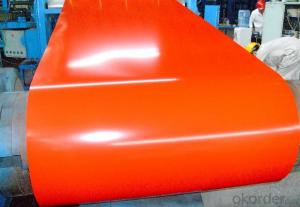Interstate Steel Structures: Bridging State Lines in Construction
Steel structures have been the backbone of construction projects for decades. They are known for their strength, durability, and versatility. But what happens when a construction project spans across state lines? How does this affect the process and the people involved? Let’s dive into the world of interstate steel structures and explore the unique challenges and opportunities they present.
The Beauty of Steel
Steel is a material that has been used in construction for centuries. It’s strong, durable, and can be shaped into almost any form. It’s no wonder that it’s a popular choice for builders and architects alike. Steel structures can be found in everything from bridges and skyscrapers to stadiums and homes. But what makes steel structures so special? Let’s take a closer look.
Strength and Durability
One of the main reasons steel is so popular in construction is its strength and durability. Steel can withstand heavy loads and extreme weather conditions, making it a reliable choice for long-lasting structures. It’s also resistant to corrosion, which means it can last for decades without needing major repairs or replacements.
Versatility
Another advantage of steel is its versatility. It can be used in a wide range of applications, from residential to commercial and industrial projects. Steel can be easily cut, welded, and shaped, making it a flexible material for designers and builders. It can also be painted or coated in various colors and finishes, allowing for a high level of customization.
The Challenge of State Lines
While steel structures offer many benefits, they also come with their own set of challenges when it comes to construction projects that span across state lines. These challenges can include differences in building codes, regulations, and labor laws. Let’s explore some of these challenges in more detail.
Building Codes and Regulations
Different states have different building codes and regulations, which can make it difficult for builders and architects to navigate when working on a project that spans across state lines. These differences can affect everything from the design and materials used to the construction process itself. It’s important for builders and architects to be aware of these differences and to work closely with local authorities to ensure compliance.
Labor Laws
Labor laws can also vary from state to state, which can impact the construction process. Different states have different requirements for things like worker’s compensation, safety training, and wage rates. Builders and architects need to be aware of these differences and ensure that they are in compliance with all applicable laws.
Communication and Collaboration
One of the keys to successfully managing a construction project that spans across state lines is effective communication and collaboration. This means working closely with local authorities, contractors, and suppliers to ensure that everyone is on the same page and that the project is moving forward smoothly. It also means being open to feedback and willing to make adjustments as needed.
The Benefits of Interstate Steel Structures
Despite the challenges, there are also many benefits to building interstate steel structures. These benefits can include access to a wider range of materials and suppliers, as well as the ability to tap into a larger pool of skilled labor. Let’s take a closer look at some of these benefits.
Access to Materials and Suppliers
When a construction project spans across state lines, it opens up access to a wider range of materials and suppliers. This can be especially beneficial for steel structures, as different states may have different suppliers that offer unique products or services. It also means that builders and architects can source materials more efficiently and cost-effectively.
Access to Skilled Labor
Another benefit of building interstate steel structures is the ability to tap into a larger pool of skilled labor. Different states may have different concentrations of skilled workers, which can be advantageous when it comes to finding the right people for the job. This can also help to ensure that the project is completed on time and to a high standard.
The Future of Interstate Steel Structures
As the construction industry continues to evolve, it’s likely that we’ll see more and more interstate steel structures being built. With the growing demand for sustainable and efficient buildings, steel structures are well-positioned to meet these needs. Let’s take a look at some of the trends and innovations that are shaping the future of interstate steel structures.
Sustainability
One of the key trends in the construction industry today is sustainability. Steel is a highly recyclable material, which makes it an attractive choice for builders and architects who are looking to reduce their environmental impact. Steel structures can also be designed to be more energy-efficient, which can help to reduce energy consumption and costs over time.
Innovations in Design and Construction
In addition to sustainability, there are also many innovations happening in the design and construction of steel structures. These can include advances in materials, such as high-strength steel, as well as new techniques for fabrication and assembly. These innovations are helping to make steel structures more efficient, cost-effective, and visually appealing.
Conclusion
Interstate steel structures present unique challenges and opportunities for the construction industry. While there are differences in building codes, regulations, and labor laws to navigate, the benefits of access to materials, suppliers, and skilled labor can make these projects worthwhile. As the industry continues to evolve, we can expect to see more interstate steel structures being built, driven by trends such as sustainability and innovation in design and construction.

